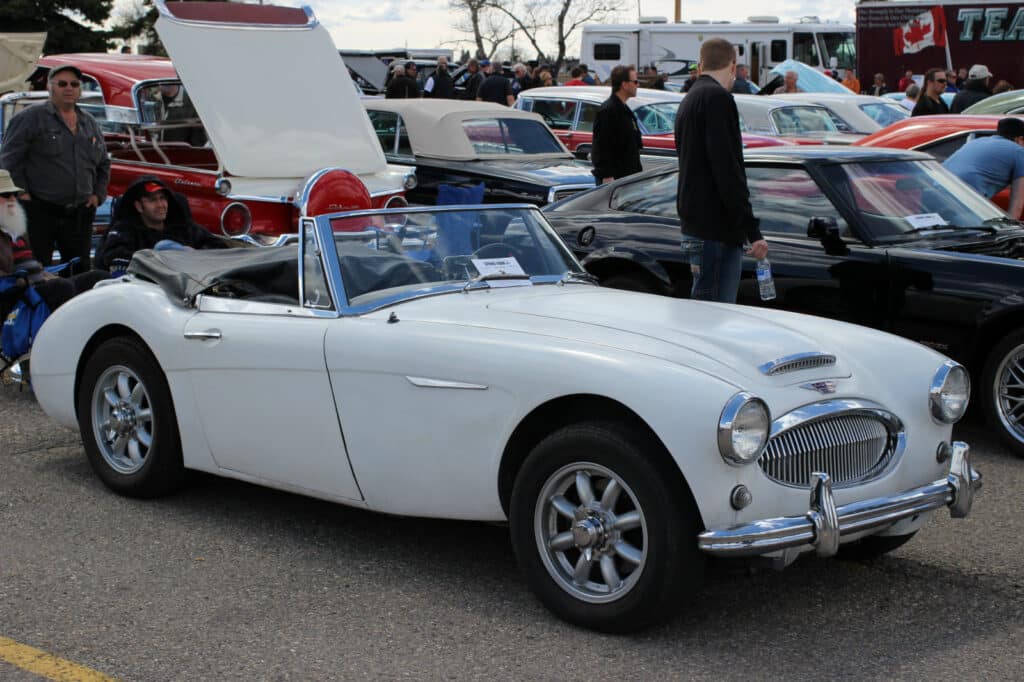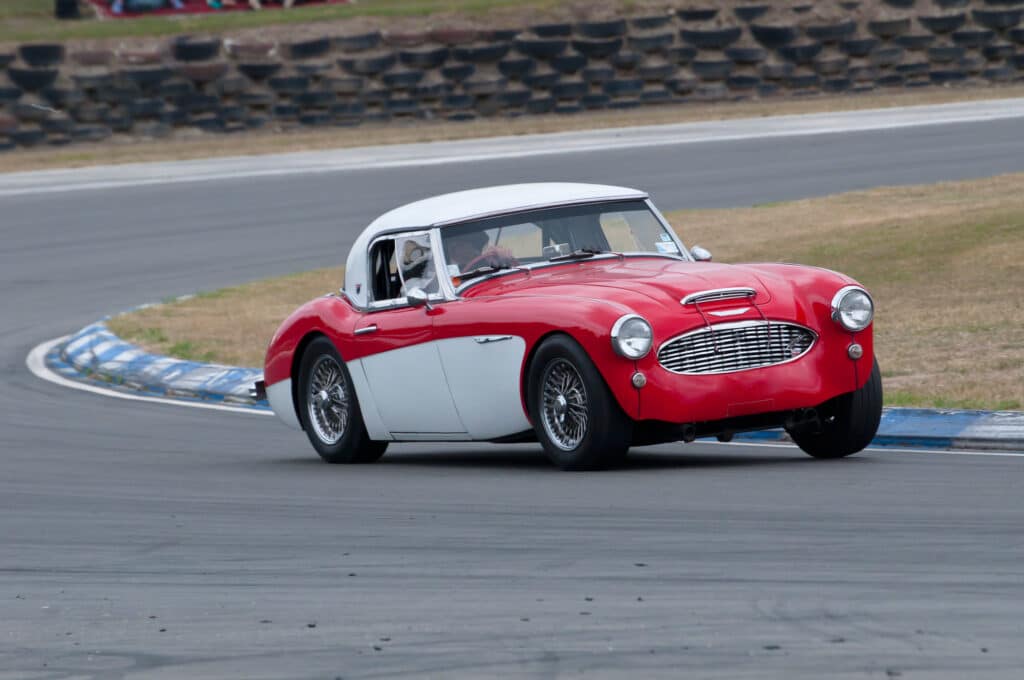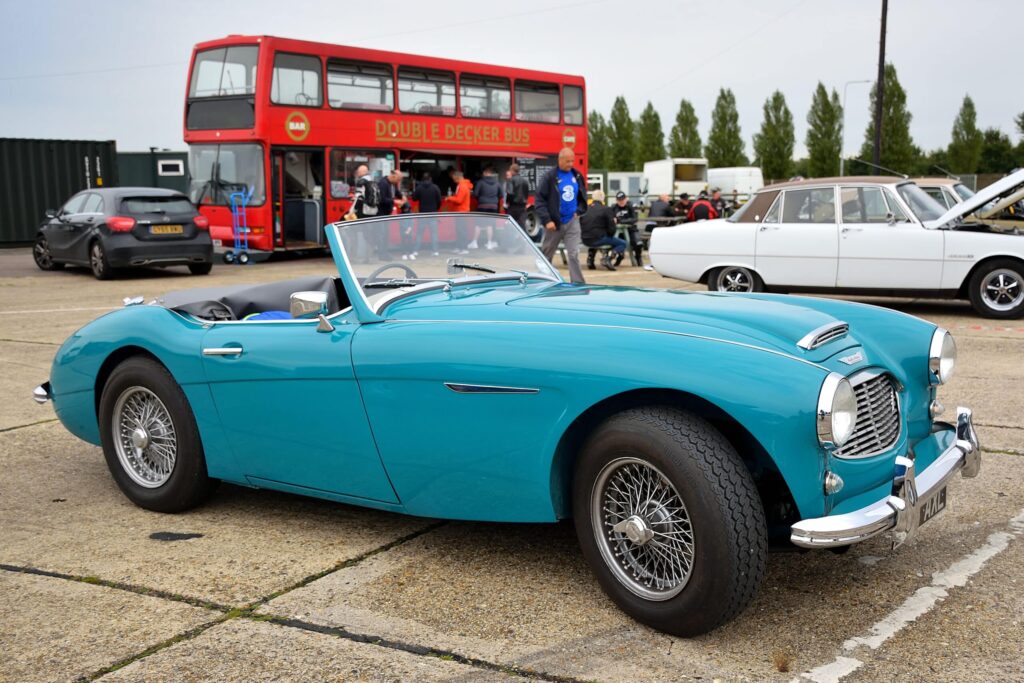You’ve probably noticed that every big automotive nation has something that makes it different from the rest. For example, Americans have powerful muscle cars, while Germans offer a showcase of high-tech vehicles. On the other hand, Italian manufacturers have given us cars built with passion and Japanese ones made with utter precision. And as for the United Kingdom, they are best known for their sports roadsters. These purpose-built cars, whose heyday was during the 60s and 70s, are one of the most significant things that came from the Island. And among all the models spawned during this period, the Austin-Healey 3000 holds a special place. This was one of those iconic cars that consequently transformed the automotive industry.
The story behind the Austin-Healey brand
The automotive history of the United Kingdom is, if anything, colorful and full of stories. And for many, it can be a bit difficult to see the difference between various seemingly similar vehicles and why some of them are so important. This is why we first have to explain the idea behind Austin-Healey.
The story starts with Donald Healey, a former aircraft pilot, and successful race driver. After gathering experience at Triumph and Nash, this versatile and talented man decided to form his own design office. His vision was to create a range of sports cars that would offer excellent performance while being reliable and easy to live with. But, being a small engineering firm, the only way to do this was by pairing up with one of the already-established manufacturers. This is where Austin, a car maker from Longbridge, came into play. Thanks to their resources, this company had no problems turning Healey’s brilliant ideas into reality. One of the first vehicles created by this partnership was the famous Frog-eye Austin Healey. As it proved to be successful and well-liked, this small and agile car set the foundations for what would become known as the big Healey.
Austin-Healey 3000 – the big one
The beauty of almost all sports cars made in the UK can be boiled down to several simple sentences. First, there is a long hood at the front, with a big straight-six engine underneath it. Next, we have a pair of seats in the middle and a rear-wheel drive at the back. Lastly, there is the weight, or the lack of it, as sports cars have to be light. And this was the recipe that was introduced and proved as successful by the vehicle in question, the Austin-Healey 3000.
Still, to scale down on allegory, we will go through several facts about this car. Introduced in 1959, the Austin-Healey 3000 was available as a 2-seat coupe or 2+2 roadster. The latter configuration has a small second-row bench, only suitable for children and short distances. Other notable features include a signature-mark front grille and recognizable wire wheels.

Mechanically wise, the Austin-Healey 3000 had a straight-six engine, with an output ranging between 130 and 150 horsepower, depending on the model. During its first production years, fuel delivery was done by classic twin-choke carburetors, which did their job just fine. But in their efforts to extract more power from the engine, Healey replaced them with a tri-carb configuration in 1963. Although this solution did improve performance and ensured crisp throttle response, it also proved to be tricky for tuning. Not wanting to compromise the built-proof reliability of its cars, Healey finally reverted to the old setup for the final years. Engines were mated to a sharp-shifting four-speed manual gearbox, which had overdrive as an option.
Depending on the model, the Austin-Healey 3000 would accelerate to 60 mph in 11 seconds and could reach 115 mph. Sure, these figures are not mind-blowing, especially by today’s standards. But this was not what this car was all about, as its most notable strong point was its handling. And this was something that was done by features like disc brakes and innovative front suspension made this car fast throughout bends.
Why was Austin Heley so important?
Among all models that made the British sports cars of the 60s so liked, the Austin-Healey is probably the most influential. This roadster was not only very competitive on the track, but it was all so also hugely fun to drive and popular among drivers. Still, it may be hard to fully understand what made it successful by merely looking at its performance figures, such as acceleration or top speed. This is because the road handling was the thing that made Austin-Healey different from its competitors. The fact is that back in the 60s, cars used cross-plied tires, which had nowhere as near your grip as modern ones. The only way to make a car fast through beds is by making them easy to control when they are pushed over the limit and start sliding. And this was something that British sports cars in the late 50s and early 60s were far better than everything else.

As unexpected as it may seem, this superiority traces its roots to World War II, when the South of Britain was used as a base for air raids on occupied Europe. After the end of this tragic conflict, the whole countryside was left littered with disused airstrips. Soon, these pieces of concrete became gathering spots for amateur automotive enthusiasts, who would race whatever they had on their hands. And more importantly, they started modifying and upgrading their cars for better results, with suspension and chassis being one of the main focuses. With time, the knowledge and experience gathered this way poured from the amateur enthusiast world into the world of professional automotive builders. This, in the end, meant that cars made by the British would handle far better than anything else on the market.
Austin Healey’s legacy
There is no getting around the fact that the Austin Healey is long gone as a brand and a functional car manufacturer. Shadow-throwing as it may be, this is not a reason to disregard what the big Healey actually accomplished. Firstly, it fully succeeded in being a competitive and reliable sports car. This was the vehicle that, in its time, would win almost any racing events it would take part in. For example, the Austin Healey 3000 had won the 12 Hours of Sebring and 24 hours of LeMans several times.

These were some of the upsides that made it popular among drivers and resulted in respectable sales figures. More importantly, the Austin Healey 3000 was one of the first British-made cars sold in large numbers in the lucrative US market. This is, in effect, its most notable success, as it helped firmly position the UK car builders on the automotive map of the world.
How much does an Austin-Healey 3000 cost today?
This sporty car was produced between 1959 and 1967, during which time approximately 44,000 left the factory. And because they are reliable, most of these vehicles are still on the road today. Of course, their condition varies greatly, which, in the end, sets their price. For example, you can find cars that need restoration for less than $20,000. On the other hand, a well-kept one would set you back for about $40,000, while those in pristine condition are even more expensive.
Austin-Healey 3000 – in short
The Austin-Healey 3000 is the 60s sports car that was equally successful at the race track as it was on the road. But more importantly, it was one of the models that defined a driver-orientated, 2-seater roadster as a concept. And this is something that hasn’t really changed up to this day, which speaks for itself. Although Austin-Healey as a brand is no longer with us, we can still admire what it accomplished and what it has given us.





